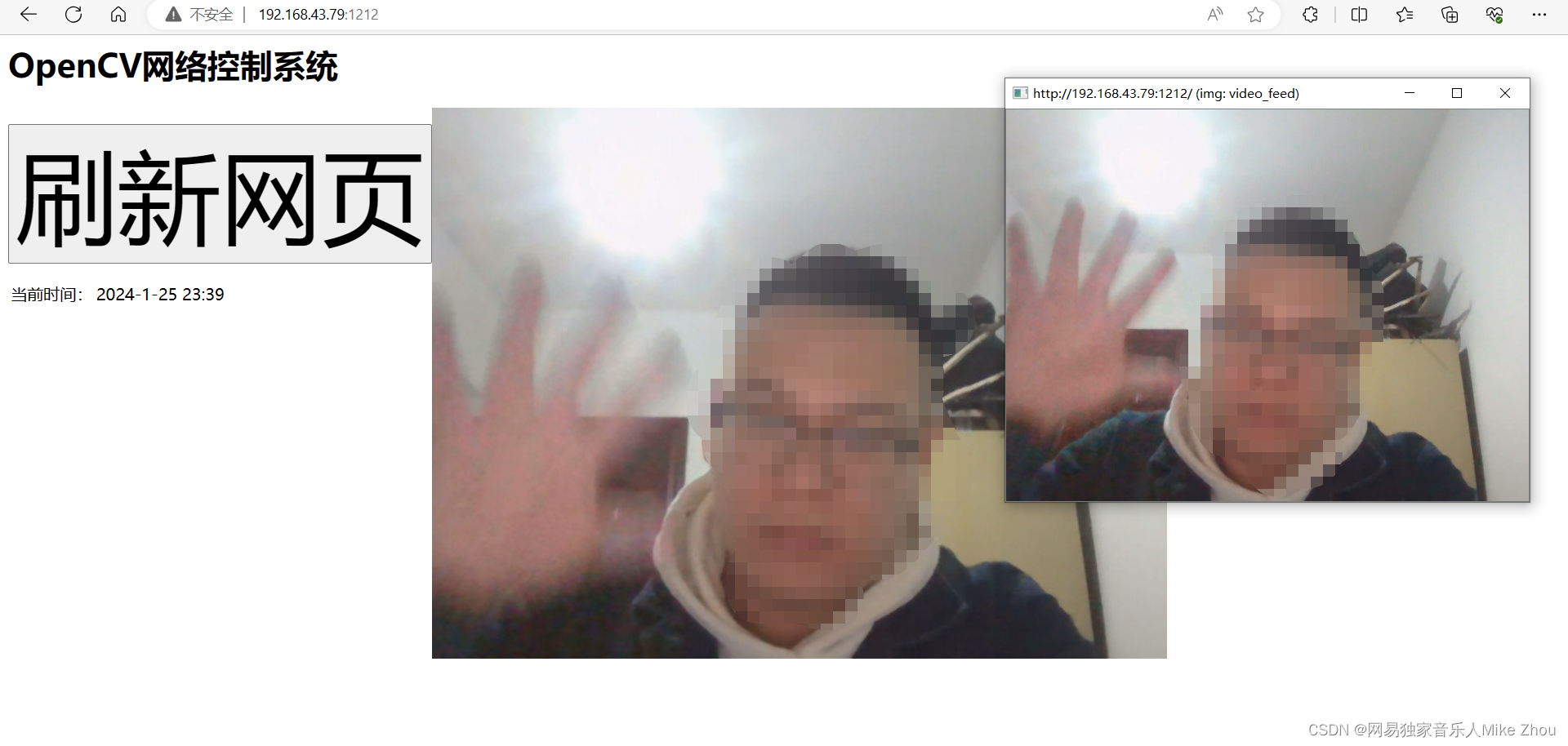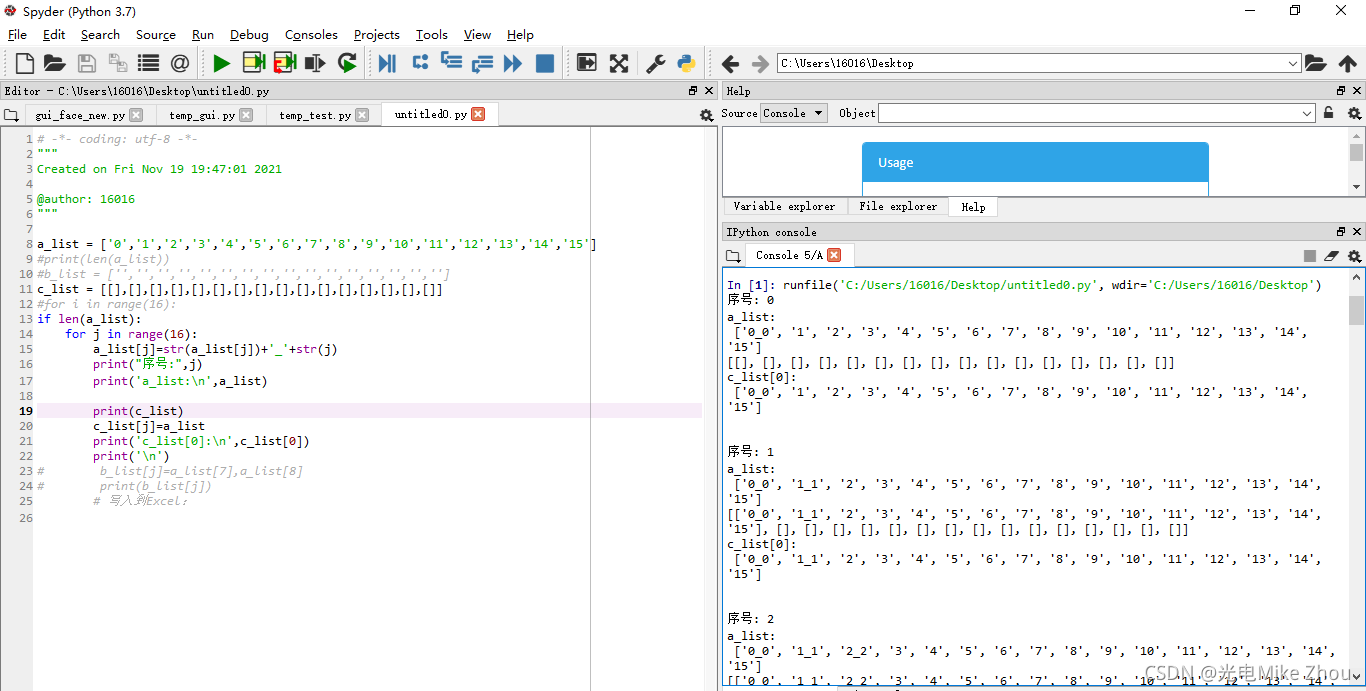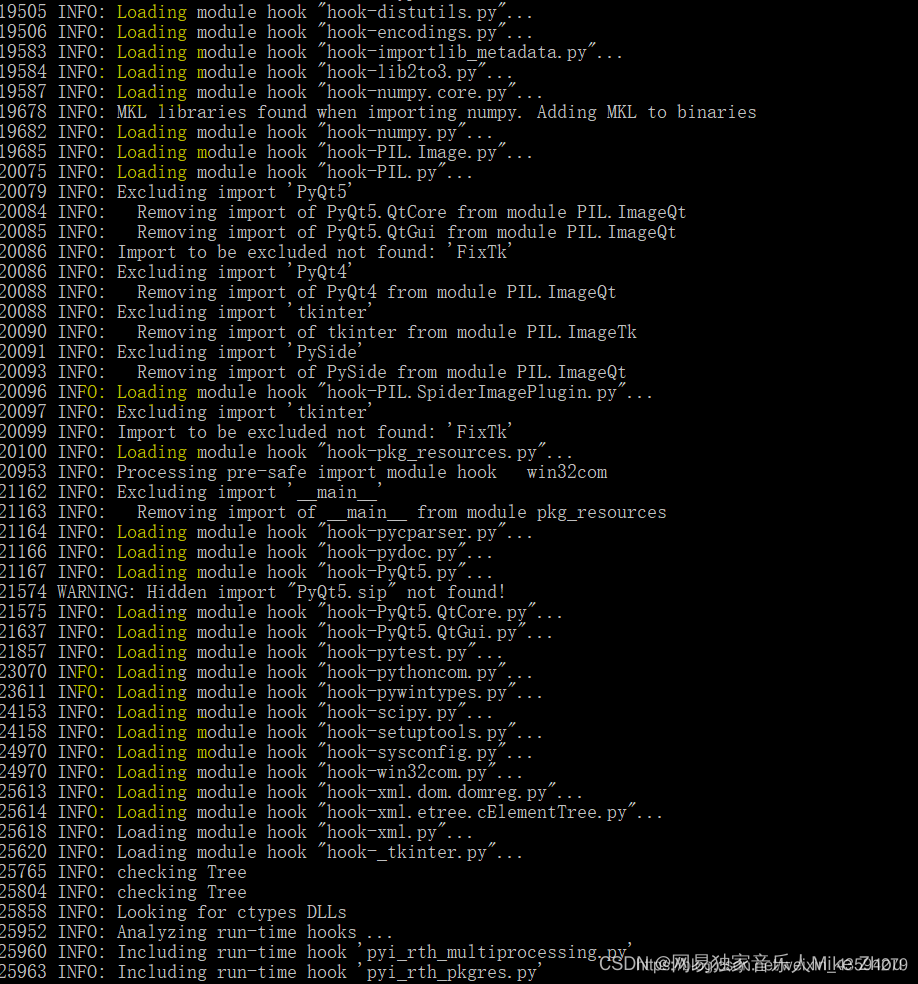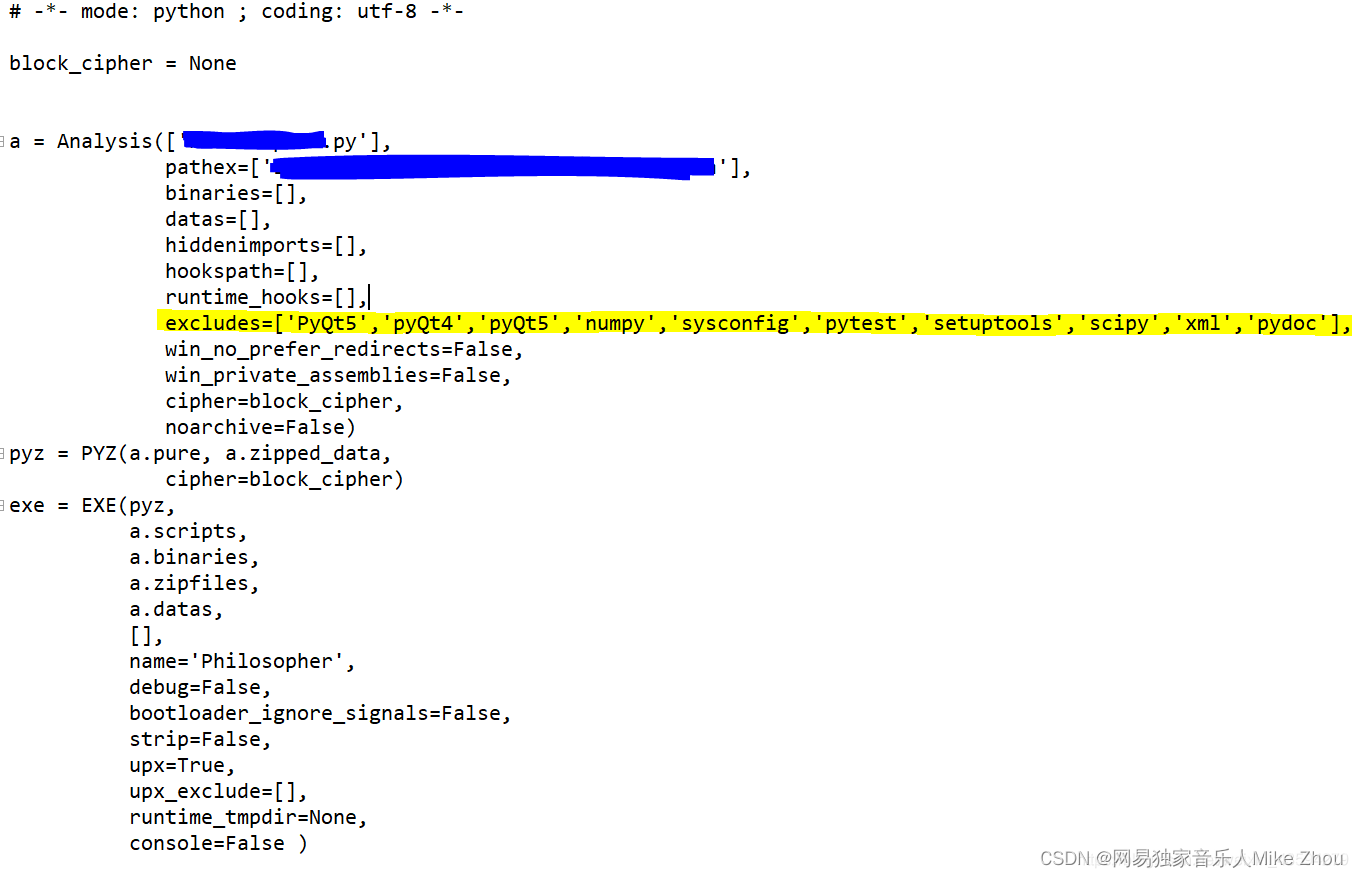【Python】采用OpenCV和Flask来进行网络图像推流的低延迟高刷FPS方法(项目模板)
gitee项目模板:
网络图像推流项目模板(采用OpenCV和Flask来进行网络图像推流的低延迟高刷FPS方法)
前文:
【最简改进】基于OpenCV-Python+Flask的人脸检测网络摄像头图像输出(将本地图像转为网络URL地址,可输出带识别框的图像)
高刷方式
首先 在前文中 我们用OpenCV获取的图像转为bytes类型 然后发送给flask端网页进行图像推流 但由于OpenCV和网络部分都会占用系统资源 所以FPS不高 亦或是延迟较高
尤其是在树莓派等系统资源不够多的系统上运行时 延时非常明显
另外 还可能进行人脸识别、手势识别等功能 所以延迟进一步提高
但采用多线程的方式 可以在以上满足所有条件的情况下 将延时控制在150ms内 切FPS能达到30

以上还是手机端浏览效果 服务端是由树莓派本身建立的
手机用的自带的浏览器 本身就有一定延迟
网络线程
网络线程其实就一个 就是flask的app.run函数
def start_server():
web_app.run(host='0.0.0.0', port=local_post)
thread_send = threading.Thread(target=start_server)
thread_send.setDaemon(True)
thread_send.start()
而图像推流依靠以下函数:
def send_img():
global cam_img
global pause_all_flag
while pause_all_flag == 0:
image = cv2.imencode('.jpg', cam_img)[1].tobytes()
yield (b'--frame\r\n'
b'Content-Type: image/jpeg\r\n\r\n' + image + b'\r\n')
if pause_all_flag == 1:
break
return
@web_app.route('/video_feed')
def video_feed():
return Response(send_img(), mimetype='multipart/x-mixed-replace; boundary=frame')
另外 表单提取和推送也很简单
@web_app.route('/', methods=['GET', 'POST'])
def index():
global kill_all_flag
global pause_all_flag
global command_str
if request.method == 'POST':
command_str = str(request.form.get('WEB_COMMAND'))
if kill_all_flag == 0 and pause_all_flag == 0:
command_jugg()
elif kill_all_flag == 0 and pause_all_flag == 1:
print(command_str)
if command_str == "继续程序":
pause_all_flag = 0
print("Continue")
else:
print("程序已暂停,继续请按键")
else:
print("程序已终止,请重启程序")
now_today = time.time()
time_hour = time.localtime(now_today).tm_hour
time_min = time.localtime(now_today).tm_min
if time_hour < 10:
time_hour = "0"+str(time_hour)
if time_min < 10:
time_min = "0"+str(time_min)
local_time_str = str(time.localtime(now_today).tm_year)+"-"+str(time.localtime(now_today).tm_mon)+"-"+str(time.localtime(now_today).tm_mday)+" "+str(time_hour)+":"+str(time_min)
data = {
'当前时间:': [ local_time_str]
}
return render_template('index.html',data_dict=data)
这三个部分其实是共用一个线程的
视频线程
视频线程的话 如果有检测、识别等部分 可以单独列一个线程 这里推荐使用最纯粹的视频获取线程作为一个单独的线程:
这里我是放在主线程里
def img_main():
global pause_all_flag
global kill_all_flag
global cam_img
while True:
time.sleep(0.1)
while pause_all_flag==0:
cam_img = cv2.flip(cv2_cap.read()[1],1)
cv2.imshow("http://"+local_ip+":"+str(local_post)+"/ (img: video_feed)",cam_img)
# 展示图像
if pause_all_flag == 1:
pause_all_flag = 1
print("暂停程序")
cv2.destroyAllWindows()
break
if cv2.waitKey(10) == 27: # 通过esc键退出摄像
kill_all_flag = 1
pause_all_flag = 1
print("结束程序")
cv2.destroyAllWindows()
break
if kill_all_flag == 1:
break
cv2_cap.release()
print("全部退出")
return
几乎是感觉不到延迟的:

整体代码
import cv2
from flask import Flask, render_template, Response, request
import threading
import socket
import time
global pause_all_flag
pause_all_flag = 0
global kill_all_flag
kill_all_flag = 0
global command_str
command_str = None
local_post = 1212
while True:
try:
web_socket = socket.socket(socket.AF_INET,socket.SOCK_DGRAM)
web_socket.connect(("8.8.8.8",80))
local_ip = str(web_socket.getsockname()[0])
web_socket.close()
print("Network Enable")
break
except:
print("Network Error...")
time.sleep(5)
web_app = Flask(__name__)
cv2_cap = cv2.VideoCapture(1) # 开启摄像头
global cam_img
ok, cam_img = cv2_cap.read() # 读取摄像头图像
if ok is False:
print('无法读取到摄像头1!')
cv2_cap.release()
cam_img=None
cv2_cap = cv2.VideoCapture(0) # 开启摄像头
ok, cam_img = cv2_cap.read() # 读取摄像头图像
if ok is False:
pause_all_flag = 1
kill_all_flag = 1
print('无法读取到摄像头0!')
try:
high=cam_img.shape[0]
width=cam_img.shape[1]
except:
pause_all_flag = 1
kill_all_flag = 1
def command_jugg():
global kill_all_flag
global pause_all_flag
global command_str
print(command_str)
command_str = None
@web_app.route('/', methods=['GET', 'POST'])
def index():
global kill_all_flag
global pause_all_flag
global command_str
if request.method == 'POST':
command_str = str(request.form.get('WEB_COMMAND'))
if kill_all_flag == 0 and pause_all_flag == 0:
command_jugg()
elif kill_all_flag == 0 and pause_all_flag == 1:
print(command_str)
if command_str == "继续程序":
pause_all_flag = 0
print("Continue")
else:
print("程序已暂停,继续请按键")
else:
print("程序已终止,请重启程序")
now_today = time.time()
time_hour = time.localtime(now_today).tm_hour
time_min = time.localtime(now_today).tm_min
if time_hour < 10:
time_hour = "0"+str(time_hour)
if time_min < 10:
time_min = "0"+str(time_min)
local_time_str = str(time.localtime(now_today).tm_year)+"-"+str(time.localtime(now_today).tm_mon)+"-"+str(time.localtime(now_today).tm_mday)+" "+str(time_hour)+":"+str(time_min)
data = {
'当前时间:': [ local_time_str]
}
return render_template('index.html',data_dict=data)
def img_main():
global pause_all_flag
global kill_all_flag
global cam_img
while True:
time.sleep(0.1)
while pause_all_flag==0:
cam_img = cv2.flip(cv2_cap.read()[1],1)
cv2.imshow("http://"+local_ip+":"+str(local_post)+"/ (img: video_feed)",cam_img)
# 展示图像
if pause_all_flag == 1:
pause_all_flag = 1
print("暂停程序")
cv2.destroyAllWindows()
break
if cv2.waitKey(10) == 27: # 通过esc键退出摄像
kill_all_flag = 1
pause_all_flag = 1
print("结束程序")
cv2.destroyAllWindows()
break
if kill_all_flag == 1:
break
cv2_cap.release()
print("全部退出")
return
def send_img():
global cam_img
global pause_all_flag
while pause_all_flag == 0:
image = cv2.imencode('.jpg', cam_img)[1].tobytes()
yield (b'--frame\r\n'
b'Content-Type: image/jpeg\r\n\r\n' + image + b'\r\n')
if pause_all_flag == 1:
break
return
@web_app.route('/video_feed')
def video_feed():
return Response(send_img(), mimetype='multipart/x-mixed-replace; boundary=frame')
def start_server():
web_app.run(host='0.0.0.0', port=local_post)
def main():
thread_send = threading.Thread(target=start_server)
thread_send.setDaemon(True)
thread_send.start()
img_main()
time.sleep(1)
print("已退出所有程序")
return
if __name__ == "__main__":
main()
<html>
<!--meta http-equiv="refresh" content="5"-->
<head>
<title>OpenCV网络控制系统</title>
</head>
<body>
<h1>OpenCV网络控制系统</h1>
<form action="/" method="post" style="float:left">
<p>
<input type="submit" style="font-size:100px" name="WEB_COMMAND" value="刷新网页">
</p>
<p>
<table>
{% for k,v in data_dict.items() %}
<tr>
<td>{{k}}</td>
<td>{{v[0]}}</td>
<td>{{v[1]}}</td>
<td>{{v[2]}}</td>
<td>{{v[3]}}</td>
<td>{{v[4]}}</td>
</tr>
{% endfor %}
</table>
</p>
</form>
<img src="{{ url_for('video_feed') }}" height="540" style="float:left">
</body>
</html>
附录:列表的赋值类型和py打包
列表赋值
BUG复现
闲来无事写了个小程序 代码如下:
# -*- coding: utf-8 -*-
"""
Created on Fri Nov 19 19:47:01 2021
@author: 16016
"""
a_list = ['0','1','2','3','4','5','6','7','8','9','10','11','12','13','14','15']
#print(len(a_list))
#b_list = ['','','','','','','','','','','','','','','','']
c_list = [[],[],[],[],[],[],[],[],[],[],[],[],[],[],[],[]]
#for i in range(16):
if len(a_list):
for j in range(16):
a_list[j]=str(a_list[j])+'_'+str(j)
print("序号:",j)
print('a_list:\n',a_list)
c_list[j]=a_list
print('c_list[0]:\n',c_list[0])
print('\n')
# b_list[j]=a_list[7],a_list[8]
# print(b_list[j])
# 写入到Excel:
#print(c_list,'\n')
我在程序中 做了一个16次的for循环 把列表a的每个值后面依次加上"_"和循环序号
比如循环第x次 就是把第x位加上_x 这一位变成x_x 我在输出测试中 列表a的每一次输出也是对的
循环16次后列表a应该变成[‘0_0’, ‘1_1’, ‘2_2’, ‘3_3’, ‘4_4’, ‘5_5’, ‘6_6’, ‘7_7’, ‘8_8’, ‘9_9’, ‘10_10’, ‘11_11’, ‘12_12’, ‘13_13’, ‘14_14’, ‘15_15’] 这也是对的
同时 我将每一次循环时列表a的值 写入到空列表c中 比如第x次循环 就是把更改以后的列表a的值 写入到列表c的第x位
第0次循环后 c[0]的值应该是[‘0_0’, ‘1’, ‘2’, ‘3’, ‘4’, ‘5’, ‘6’, ‘7’, ‘8’, ‘9’, ‘10’, ‘11’, ‘12’, ‘13’, ‘14’, ‘15’] 这也是对的
但是在第1次循环以后 c[0]的值就一直在变 变成了c[x]的值
相当于把c_list[0]变成了c_list[1]…以此类推 最后得出的列表c的值也是每一项完全一样
我不明白这是怎么回事
我的c[0]只在第0次循环时被赋值了 但是后面它的值跟着在改变
如图:

第一次老出bug 赋值以后 每次循环都改变c[0]的值 搞了半天都没搞出来
无论是用appen函数添加 还是用二维数组定义 或者增加第三个空数组来过渡 都无法解决
代码改进
后来在我华科同学的指导下 突然想到赋值可以赋的是个地址 地址里面的值一直变化 导致赋值也一直变化 于是用第二张图的循环套循环深度复制实现了
代码如下:
# -*- coding: utf-8 -*-
"""
Created on Fri Nov 19 19:47:01 2021
@author: 16016
"""
a_list = ['0','1','2','3','4','5','6','7','8','9','10','11','12','13','14','15']
#print(len(a_list))
#b_list = ['','','','','','','','','','','','','','','','']
c_list = [[],[],[],[],[],[],[],[],[],[],[],[],[],[],[],[]]
#for i in range(16):
if len(a_list):
for j in range(16):
a_list[j]=str(a_list[j])+'_'+str(j)
print("序号:",j)
print('a_list:\n',a_list)
for i in range(16):
c_list[j].append(a_list[i])
print('c_list[0]:\n',c_list[0])
print('\n')
# b_list[j]=a_list[7],a_list[8]
# print(b_list[j])
# 写入到Excel:
print(c_list,'\n')
解决了问题

优化
第三次是请教了老师 用copy函数来赋真值
代码如下:
# -*- coding: utf-8 -*-
"""
Created on Fri Nov 19 19:47:01 2021
@author: 16016
"""
a_list = ['0','1','2','3','4','5','6','7','8','9','10','11','12','13','14','15']
#print(len(a_list))
#b_list = ['','','','','','','','','','','','','','','','']
c_list = [[],[],[],[],[],[],[],[],[],[],[],[],[],[],[],[]]
#for i in range(16):
if len(a_list):
for j in range(16):
a_list[j]=str(a_list[j])+'_'+str(j)
print("序号:",j)
print('a_list:\n',a_list)
c_list[j]=a_list.copy()
print('c_list[0]:\n',c_list[0])
print('\n')
# b_list[j]=a_list[7],a_list[8]
# print(b_list[j])
# 写入到Excel:
#print(c_list,'\n')
同样能解决问题

最后得出问题 就是指针惹的祸!
a_list指向的是个地址 而不是值 a_list[i]指向的才是单个的值 copy()函数也是复制值而不是地址
如果这个用C语言来写 就直观一些了 难怪C语言是基础 光学Python不学C 遇到这样的问题就解决不了
C语言yyds Python是什么垃圾弱智语言
总结
由于Python无法单独定义一个值为指针或者独立的值 所以只能用列表来传送
只要赋值是指向一个列表整体的 那么就是指向的一个指针内存地址 解决方法只有一个 那就是将每个值深度复制赋值(子列表内的元素提取出来重新依次连接) 或者用copy函数单独赋值
如图测试:





部分代码:
# -*- coding: utf-8 -*-
"""
Created on Sat Nov 20 16:45:48 2021
@author: 16016
"""
def text1():
A=[1,2,3]
B=[[],[],[]]
for i in range(len(A)):
A[i]=A[i]+i
B[i]=A
print(B)
def text2():
A=[1,2,3]
B=[[],[],[]]
A[0]=A[0]+0
B[0]=A
print(B)
A[1]=A[1]+1
B[1]=A
print(B)
A[2]=A[2]+2
B[2]=A
print(B)
if __name__ == '__main__':
text1()
print('\n')
text2()
py打包
Pyinstaller打包exe(包括打包资源文件 绝不出错版)
依赖包及其对应的版本号
PyQt5 5.10.1
PyQt5-Qt5 5.15.2
PyQt5-sip 12.9.0
pyinstaller 4.5.1
pyinstaller-hooks-contrib 2021.3
Pyinstaller -F setup.py 打包exe
Pyinstaller -F -w setup.py 不带控制台的打包
Pyinstaller -F -i xx.ico setup.py 打包指定exe图标打包
打包exe参数说明:
-F:打包后只生成单个exe格式文件;
-D:默认选项,创建一个目录,包含exe文件以及大量依赖文件;
-c:默认选项,使用控制台(就是类似cmd的黑框);
-w:不使用控制台;
-p:添加搜索路径,让其找到对应的库;
-i:改变生成程序的icon图标。
如果要打包资源文件
则需要对代码中的路径进行转换处理
另外要注意的是 如果要打包资源文件 则py程序里面的路径要从./xxx/yy换成xxx/yy 并且进行路径转换
但如果不打包资源文件的话 最好路径还是用作./xxx/yy 并且不进行路径转换
def get_resource_path(relative_path):
if hasattr(sys, '_MEIPASS'):
return os.path.join(sys._MEIPASS, relative_path)
return os.path.join(os.path.abspath("."), relative_path)
而后再spec文件中的datas部分加入目录
如:
a = Analysis(['cxk.py'],
pathex=['D:\\Python Test\\cxk'],
binaries=[],
datas=[('root','root')],
hiddenimports=[],
hookspath=[],
hooksconfig={},
runtime_hooks=[],
excludes=[],
win_no_prefer_redirects=False,
win_private_assemblies=False,
cipher=block_cipher,
noarchive=False)
而后直接Pyinstaller -F setup.spec即可
如果打包的文件过大则更改spec文件中的excludes 把不需要的库写进去(但是已经在环境中安装了的)就行
这些不要了的库在上一次编译时的shell里面输出
比如:


然后用pyinstaller --clean -F 某某.spec






















 4748
4748











 被折叠的 条评论
为什么被折叠?
被折叠的 条评论
为什么被折叠?










